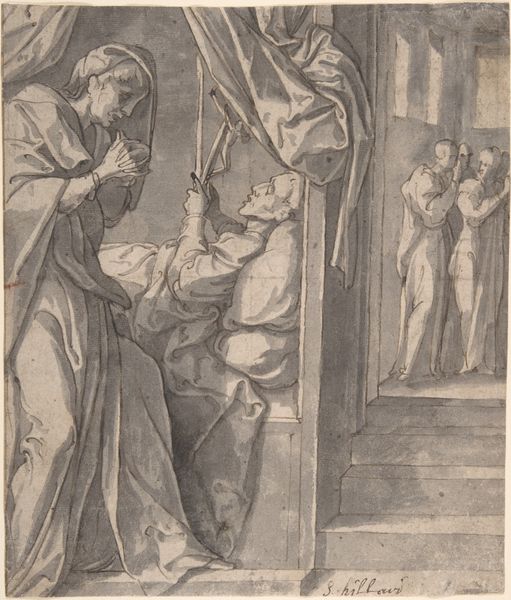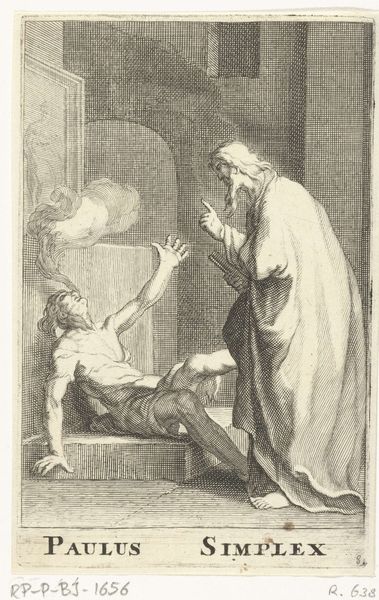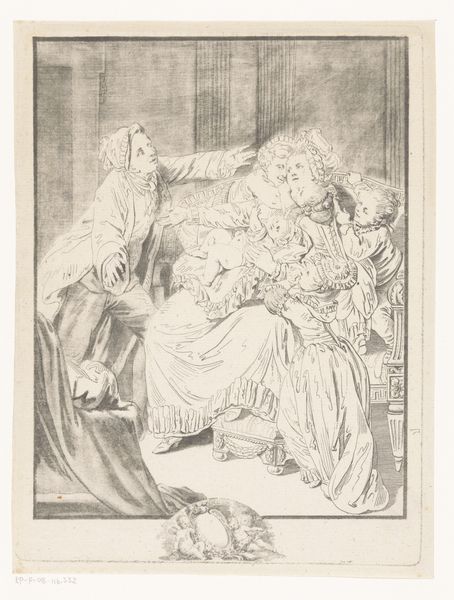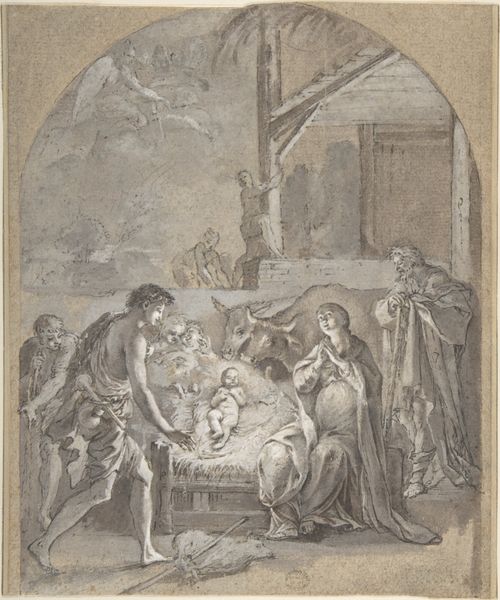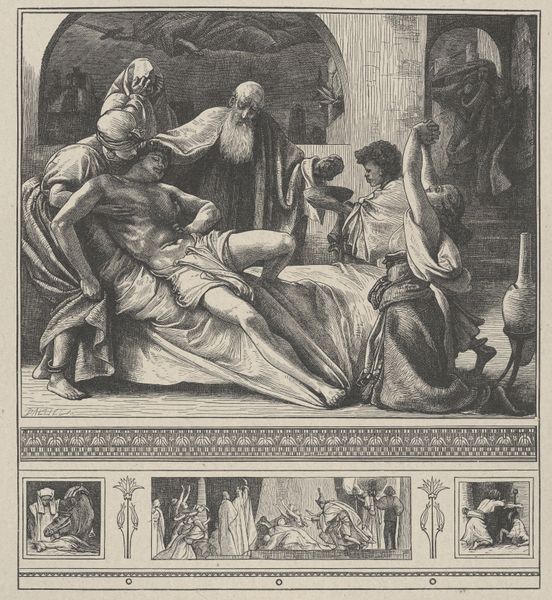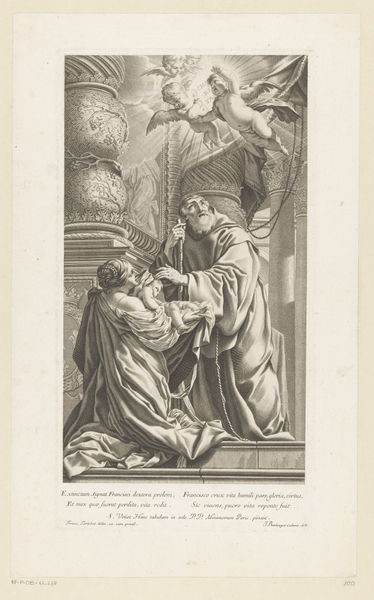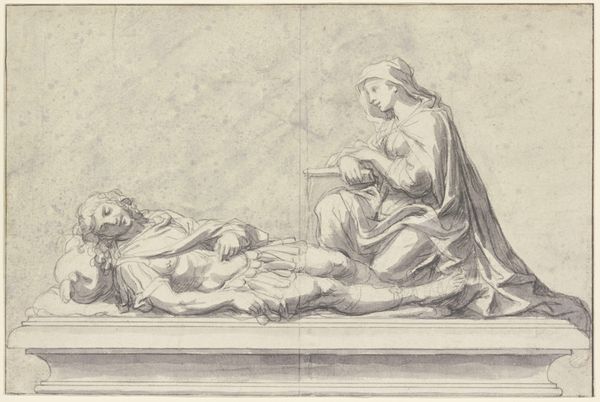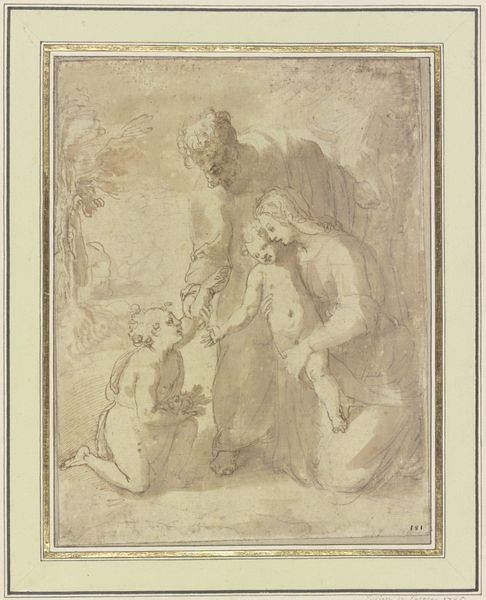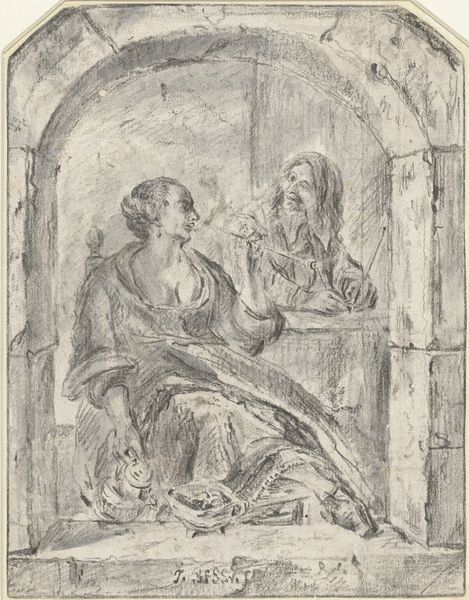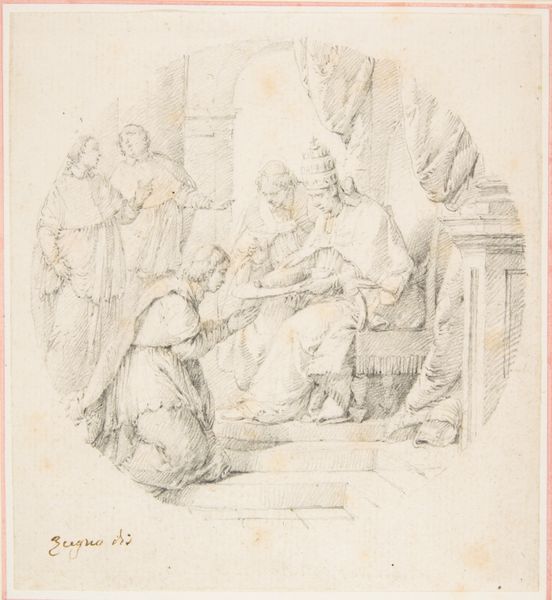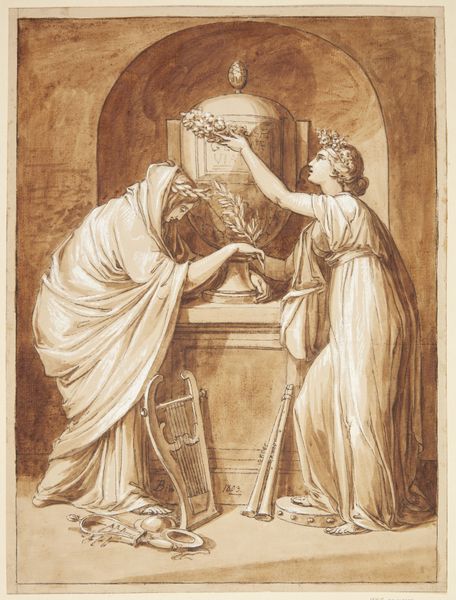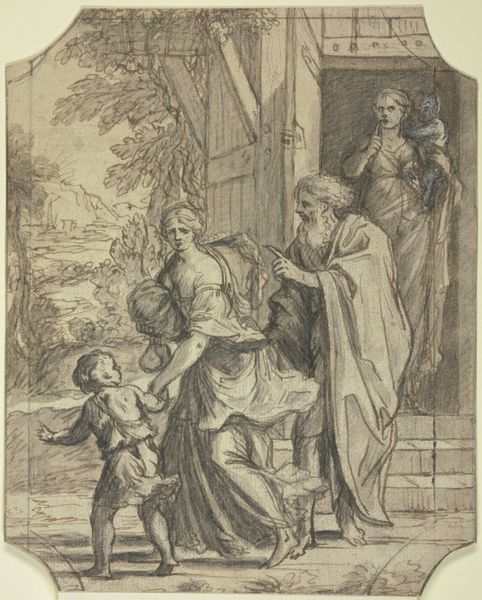
drawing, paper, ink, chalk, graphite
#
drawing
#
narrative-art
#
baroque
#
figuration
#
paper
#
ink
#
pencil drawing
#
chalk
#
graphite
#
history-painting
Copyright: Public Domain
Curator: We are standing before "Christus heilt den Besessenen," a compelling drawing held at the Städel Museum. Editor: It has this striking dynamism; even in monochrome, the figure on the right practically writhes off the page. Curator: This work, whose creator is recorded as Abraham Bloemaert, uses a combination of ink, chalk, graphite, and pencil drawing on paper. We see a biblical narrative unfolding, showcasing Christ healing the possessed. Editor: It is hard to miss the religious undercurrent. The figure on the left holds what looks like a sacred text, while an eerie smoke emerges from the man on the right—a physical manifestation of his torment, perhaps? This evokes themes of faith, suffering, and salvation, aligning neatly with religious studies interpretations on societal vulnerability to perceived forces of evil. Curator: Absolutely, and Bloemaert captures that vulnerability through stark contrasts. Note how the relatively peaceful depiction of a painting hung on the wall in the background only heightens the chaotic episode occuring stage left. The piece gives a sense of art's purpose as a means to engage—and sometimes challenge—the public's notions of spirituality. Editor: Looking through a feminist lens, the possessed man's contorted body can be read as the objectification and marginalization of the "other." It reflects the era’s patriarchal structure and power dynamics projected onto vulnerable individuals through societal expectations and fear. Is the exorcism empowering or further subjugating the individual to religious doctrines? Curator: That's a compelling angle, drawing connections between visual culture, power structures, and the vulnerability inherent in differing abilities. What seems to remain constant, through any reading, is Bloemaert's success at turning these sorts of interactions between citizen and doctrine, or citizen and state, into objects that make their audience think. Editor: I agree; it provokes discussions on so many social and historical layers. Curator: Yes, and these discussions help broaden our understanding of this artwork. Editor: Indeed, by seeing it in dialogue with theory, it is far more than lines on paper, it's a mirror reflecting complex interactions.
Comments
No comments
Be the first to comment and join the conversation on the ultimate creative platform.

